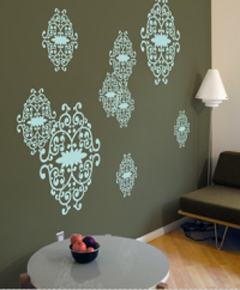If you’re anything like me you have a thousand and one programs installed on your PC. I like having a program to do everything I could possibly imagine, but when I can only see a few square inches of my wallpaper every time I click on the Start menu, I know I have a problem.
I was always reluctant to organise my start menu as it seemed like a bit too much work to establish and maintain, for minimal payoff. However, about a week ago I bit the bullet and gave it a go. Now I’m stoked with my new setup, as finding the program I need is a real breeze.
The key point to sorting your programs is that there is no right or wrong set of sort folders. Simply use what feels best to you. I started with a logical set of folders, then started moving the programs in. If I couldn’t find a suitable folder for a particular program, I simply created one. Now I have a setup with the following folders:
- Apps – generic folder for miscellaneous applications (e.g Nero, mobile phone drivers)
- Downloading – any downloading related apps (e.g FlashFXP, eMule)
- Games – for the small number of games I have installed
- Guitar – apps related to learning the guitar (e.g Guitar Pro, Jamorama)
- Internet – all my internet related apps (e.g Firefox)
- Power Apps – powerful application suites (e.g MS Office, Macromedia Product Suite)
- Security & Performance – all my security and performance apps (e.g ZoneAlarm, Spybot)
- Music – any music/mp3 related apps (e.g Tag&Rename, foobar2000)
- Video – any video related apps (e.g Media Player Classic)
I find this works extremely well for me, but like I said, it’s about what works best for you.
Now to the process of setting this up. It’s a little tricky as some programs install themselves for all users, whilst others install specific to the account you’re using at the time. This is the procedure for moving the majority of programs:
- Ensure that you’re using a Windows account with Admin privileges (if not, you won’t get past step 2)
- Right-click on the Start button, then click ‘Explore All Users’
- Double click on the ‘Programs’ folder
- Create the sort folders you think you’ll need by clicking File>New>Folder
- Click and drag each of the existing program folders into the relevant sort folder
- Close the window when you’re done
Now, for any other programs which installed themselves for a specific user, the process is the same but in step 2, select ‘Explore’ rather than ‘Explore All Users.’ Simple.
The last step is the maintenance. Fortunately, most programs give you the option to select the Start Menu folder when you install them. If this is the case, choose the applicable directory and you’re away. Otherwise, you’ll have to manually move the shortcuts once the install is complete (do this by following the same steps as above, but without the need for step 4).
So what about you? Do you find it useful to sort your programs in the Start Menu? Do you have a better system? Let us know by leaving a comment below.
Thanks for reading!
-Howo

